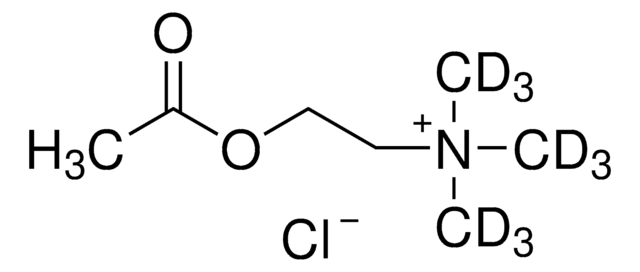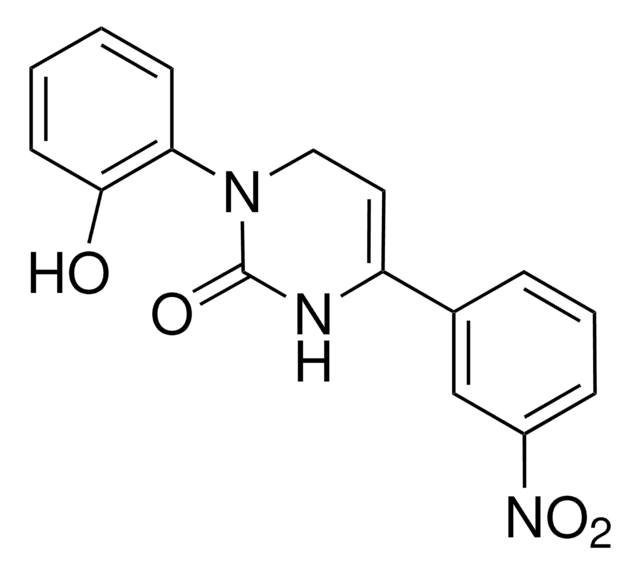A9101
Acetylcholine chloride
≥99% (TLC), powder or crystals
Synonym(s):
ACh
About This Item
Recommended Products
product name
Acetylcholine chloride, pkg of 150 mg (per vial)
Assay
≥99% (TLC)
form
powder or crystals
packaging
pkg of 150 mg (per vial)
mp
146-150 °C (lit.)
solubility
H2O: soluble
storage temp.
room temp
SMILES string
[Cl-].CC(=O)OCC[N+](C)(C)C
InChI
1S/C7H16NO2.ClH/c1-7(9)10-6-5-8(2,3)4;/h5-6H2,1-4H3;1H/q+1;/p-1
InChI key
JUGOREOARAHOCO-UHFFFAOYSA-M
Gene Information
human ... CHRM3(1131)
Looking for similar products? Visit Product Comparison Guide
General description
Application
- for standard curve preparation in hestrin assay
- in Protein expression, radioactive ligand binding assay and electrophysiological studies of Lymnaea stagnalis acetylcholine binding protein (Ls-AChBPs)
- as a supplement in extracellular solutions for treating the voltage clamped cells in electrophysiology studies
Biochem/physiol Actions
Reconstitution
Storage Class Code
11 - Combustible Solids
WGK
WGK 3
Flash Point(F)
Not applicable
Flash Point(C)
Not applicable
Personal Protective Equipment
Certificates of Analysis (COA)
Search for Certificates of Analysis (COA) by entering the products Lot/Batch Number. Lot and Batch Numbers can be found on a product’s label following the words ‘Lot’ or ‘Batch’.
Already Own This Product?
Find documentation for the products that you have recently purchased in the Document Library.
Customers Also Viewed
Our team of scientists has experience in all areas of research including Life Science, Material Science, Chemical Synthesis, Chromatography, Analytical and many others.
Contact Technical Service














